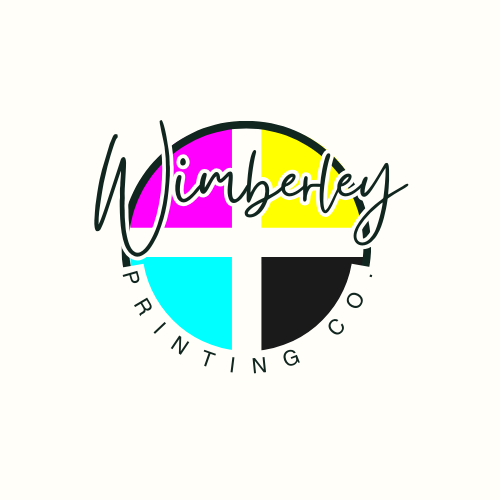Understanding Common Printer's Terms: A Quick Guide for Beginners
Share
The printing industry has its own language, full of technical terms and jargon that can feel overwhelming to newcomers. Whether you’re designing a book, brochure, or custom project, understanding common printer's terms can make the process smoother and ensure you get the results you’re looking for. Here’s a handy guide to some of the most frequently used printing terms and what they mean.
1. Bleed
Bleed refers to the area of a design that extends beyond the edge of the finished product. This ensures that when the document is trimmed to size, there are no unintended white borders. For example, if your document size is 8.5” x 11”, your printer might request a bleed size of 8.75” x 11.25”.
2. Trim Size
The trim size is the final dimensions of your printed piece after it has been cut to its finished size. For instance, a standard letter-sized document has a trim size of 8.5” x 11”.
3. CMYK
CMYK stands for Cyan, Magenta, Yellow, and Key (Black)—the four ink colors used in most color printing processes. Printers combine these colors in varying amounts to produce a full spectrum of colors on the page.
4. DPI (Dots Per Inch)
DPI measures the resolution of an image or printed material. A higher DPI means more detail and clarity. For professional printing, 300 DPI is typically recommended for crisp, high-quality images.
5. Offset Printing
Offset printing is a traditional method where ink is transferred from a plate to a rubber blanket, then onto the paper. It’s ideal for large-volume printing due to its cost efficiency and high quality.
6. Digital Printing
Digital printing is a modern printing method that uses digital files, like PDFs, to print directly onto the material. It’s perfect for smaller runs and projects requiring quick turnarounds or personalized elements.
7. PMS (Pantone Matching System)
PMS is a standardized color system used in printing to ensure color consistency across different materials and printers. Each color is assigned a unique number, making it easy to replicate exact hues.
8. Proof
A proof is a sample of your printed project that allows you to review the design, layout, and colors before the full production run. Proofs can be physical or digital, depending on the project.
9. Stock
Stock refers to the type of paper or material being printed on. Common options include glossy, matte, and uncoated stocks, each offering different finishes and textures.
10. Binding
Binding is the process of assembling and securing the pages of a printed piece. Common binding methods include:
- Saddle Stitching: Stapling pages along the spine.
- Perfect Binding: Using glue to bind pages together with a flat spine.
- Coil Binding: Using a spiral coil to hold pages together, allowing them to lay flat.
11. Registration Marks
These small crosshair-like symbols are used during printing to ensure all colors align correctly on the page.
12. Varnish
A varnish is a coating applied to printed materials to enhance their appearance and protect them from smudges or wear. Options include gloss, matte, or spot varnishes for added design elements.
13. Imposition
Imposition is the arrangement of pages on a sheet of paper to maximize efficiency during printing and minimize paper waste.
14. Die-Cutting
Die-cutting is a process that uses a custom-shaped blade to cut your printed piece into unique shapes, such as rounded corners or intricate designs.
15. Embossing and Debossing
- Embossing raises a design above the paper's surface.
- Debossing presses the design into the paper, creating an indented effect.
16. Saddle Stitch
A common binding method where folded sheets are stapled together along the spine. It’s often used for booklets and catalogs.
17. Gutter
The gutter refers to the space between two facing pages in a bound book, ensuring that no content is lost in the fold.
18. UV Coating
UV coating is a glossy, protective finish applied to printed materials, making colors more vibrant and protecting against wear.
19. Overprint
Overprint occurs when one color is printed on top of another. It’s often used for special effects or to avoid misregistration in designs.
20. Grain Direction
The grain direction refers to the alignment of fibers in a sheet of paper. It affects how the paper folds and feels.
Printing with Confidence
Printing doesn’t have to be confusing! By understanding these common terms, you can communicate more effectively with your printer and make informed decisions about your project.
At Wimberley Printing Company, we’re here to guide you every step of the way. Whether you’re printing a book, a brochure, or a custom project, our team has the expertise to ensure exceptional results. Contact us today to learn more or get started on your next print project!
